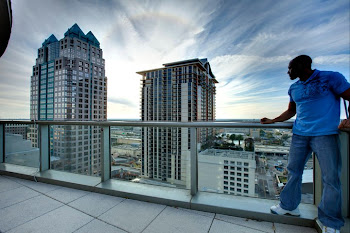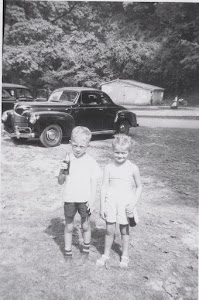Remember the old ditty that goes something like this: "The 24th of May is the Queen's birthday. If you don't give us a holiday, we'll all run away."
Well, we've changed the date to make it the third Monday in May, which in 2020 happens to be the 18th, but Canadians still look forward to Victoria Day, named after the British monarch who died more than a century ago. I wonder how many Canadians today even know who she was.
It says something about this vast and magnificent land, and its people, the majority of whom are housed along a thin east to west ribbon of territory, close to the American behemoth, that the name of the major Spring holiday is named after a figure from Canada's past.
And to me, that's OK. We are a people who have never really understood each other very well -- Canada has more or less developed on a regional basis, yet we can enjoy together the common holiday -- Victoria Day.
When I was a kid growing up in Chapleau, the ice would be off the river, and the weekend marked the beginning of the swimming season for the hale and hearty. Have to admit that I was not among them, preferring to wait until Dominion Day -- now Canada Day. I see in weather reports from Chapleau, they had snow recently so maybe no early swims in 2020.
It was also the weekend when summer camps, (now usually called cottages) were opened for the season, and perhaps most of Canada followed much the same routine. At least, today as I reflect on the past 50 years or so, it seems to me they did wherever I happened to be living -- Ontario, Manitoba, Saskatchewan, Alberta, and now British Columbia.
We always felt quite kindly towards Queen Victoria for giving us a holiday, and nobody ever abolished it so we didn't have to run away. Every once in a while someone wants to change the name of the holiday to reflect contemporary Canadian society or abolish the monarchy. Queen Victoria's great-great granddaughter, Elizabeth II officially remains Canada's head of state..
At one point in my life I was a staunch monarchist, most likely because I was so greatly influenced by my grandparents, George and Edith Hunt, who had an abiding faith in values like duty, service, the monarch, family, country - and the Anglican church, then called the Church of England in Canada.
My thinking on the monarchy has changed somewhat today but as this Victoria Day weekend arrives I pause and wonder if it was all so bad years ago -- at least we knew where we stood without equivocation.
We knew beyond any shadow of a doubt as my Grandpa Hunt would say who we were. We did not need opinion polls to tell us what we were thinking.
Much has changed in Canada since the days of my grandparents, but on this Victoria Day weekend, having now lived in five provinces of this great nation, I think we are still a work in progress. Perhaps it is a good time to reflect on ourselves as Canadians and define our future focusing on those things that bring us together rather than those things that divide us.
Many years ago now, the distinguished Canadian journalist Bruce Hutchison wrote in a column: "This nation with all its problems, its unbalanced politics and its repulsive self pity remains the luckiest in a deranged world."
So, let's enjoy the Victoria Day weekend, and let's not run away from the challenges before us as Canadians.despite the challenges presented to us this year by the virus issues. My email is mj.morris@live.ca
We always felt quite kindly towards Queen Victoria for giving us a holiday, and nobody ever abolished it so we didn't have to run away. Every once in a while someone wants to change the name of the holiday to reflect contemporary Canadian society or abolish the monarchy. Queen Victoria's great-great granddaughter, Elizabeth II officially remains Canada's head of state..
At one point in my life I was a staunch monarchist, most likely because I was so greatly influenced by my grandparents, George and Edith Hunt, who had an abiding faith in values like duty, service, the monarch, family, country - and the Anglican church, then called the Church of England in Canada.
My thinking on the monarchy has changed somewhat today but as this Victoria Day weekend arrives I pause and wonder if it was all so bad years ago -- at least we knew where we stood without equivocation.
We knew beyond any shadow of a doubt as my Grandpa Hunt would say who we were. We did not need opinion polls to tell us what we were thinking.
Much has changed in Canada since the days of my grandparents, but on this Victoria Day weekend, having now lived in five provinces of this great nation, I think we are still a work in progress. Perhaps it is a good time to reflect on ourselves as Canadians and define our future focusing on those things that bring us together rather than those things that divide us.
Many years ago now, the distinguished Canadian journalist Bruce Hutchison wrote in a column: "This nation with all its problems, its unbalanced politics and its repulsive self pity remains the luckiest in a deranged world."
So, let's enjoy the Victoria Day weekend, and let's not run away from the challenges before us as Canadians.despite the challenges presented to us this year by the virus issues. My email is mj.morris@live.ca
















